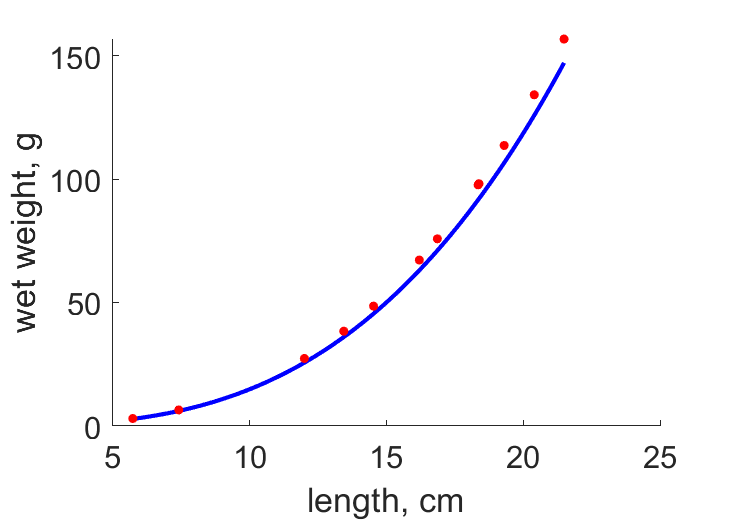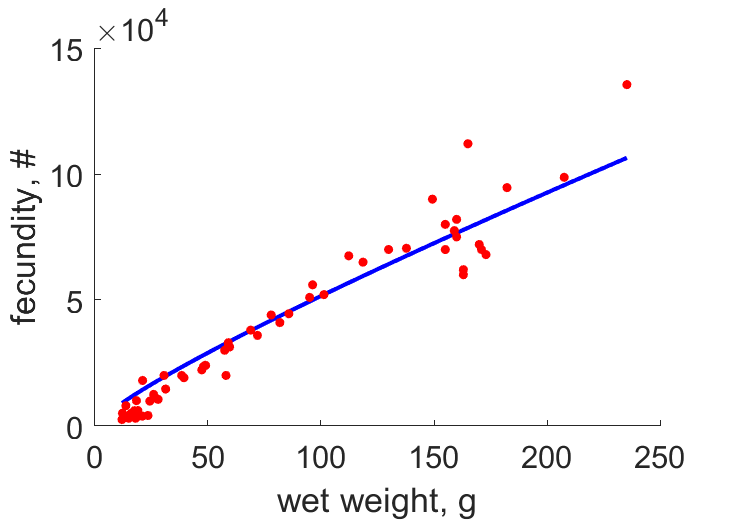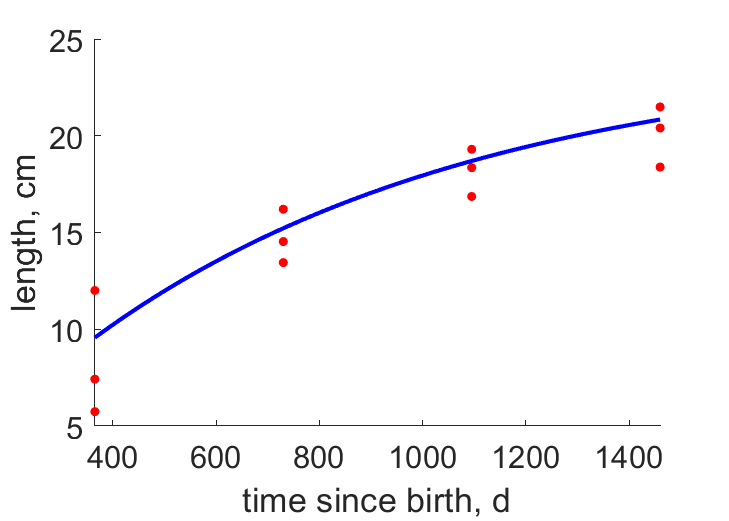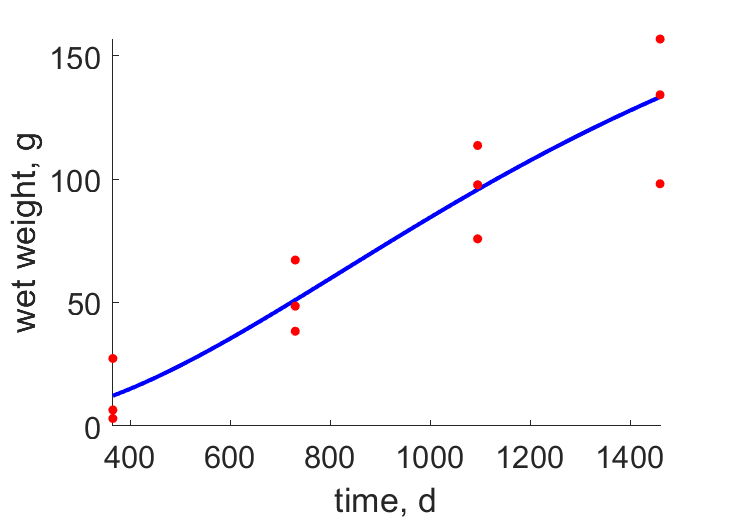Predictions & Data for this entry
| Model: abj | climate: MB | migrate: Mo | phylum: |
| COMPLETE = 2.7 | ecozone: MPW | food: bjPz, jiCi | class: |
| MRE = 0.095 | habitat: 0jMp, 0jMd | gender: D | order: |
| SMSE = 0.016 | embryo: Mp | reprod: O | family: |
Zero-variate data
| Data | Observed | Predicted | (RE) | Unit | Description | Reference |
|---|---|---|---|---|---|---|
| ab | 6.125 | 6.461 | (0.05481) | d | age at birth | ZhanLou2016 |
| tp | 250 | 226.6 | (0.09365) | d | time since birth at puberty | LimLe2010 |
| am | 8395 | 8383 | (0.001455) | d | life span | MasuAmao1984, Fishbase |
| Lb | 0.46 | 0.3758 | (0.1831) | cm | total length at birth | ZhanLou2016 |
| Lp | 7 | 6.219 | (0.1116) | cm | total length at puberty | YanLiu2014 |
| Li | 40 | 37.71 | (0.05735) | cm | ultimate total length | MasuAmao1984, Fishbase |
| Wwb | 0.0012 | 0.001097 | (0.08573) | g | wet weight at birth | JianZhan2018 |
| Wwp | 5.419 | 4.973 | (0.08243) | g | wet weight at puberty | LiShan2011, MaYan2017, YanLi2006 |
| Wwi | 1011 | 1108 | (0.09606) | g | ultimate wet weight | LiShan2011, MaYan2017, YanLi2006 |
| Ri | 575.3 | 945 | (0.6424) | #/d | maximum reprod rate | Shui2000 |
| GSI | 0.12 | 0.3209 | (1.674) | g/g | gonado somatic index | LimLe2010 |
Uni- and bivariate data
| Data | Figure | Independent variable | Dependent variable | (RE) | Reference |
|---|---|---|---|---|---|
| LW |  | length | wet weight | (0.06205) | YanLi2006, LiShan2011, ZhanLi2010 |
| WN |  | wet weight | fecundity | (0.1688) | YanLi2006, ZhanLi2010, Shui2000, LimLe2010 |
| tL |  | time since birth | length | (0.09887) | YanLi2006, LiShan2011, ZhanLi2010 |
| tW |  | time | wet weight | (0.1855) | YanLi2006, LiShan2011, ZhanLi2010 |
Pseudo-data at Tref = 20°C
| Data | Generalised animal | Larimichthys polyactis | Unit | Description |
|---|---|---|---|---|
| v | 0.02 | 0.03463 | cm/d | energy conductance |
| p_M | 18 | 56.67 | J/d.cm^3 | vol-spec som maint |
| k_J | 0.002 | 0.002 | 1/d | maturity maint rate coefficient |
| k | 0.3 | 0.1841 | - | maintenance ratio |
| kap | 0.8 | 0.5599 | - | allocation fraction to soma |
| kap_G | 0.8 | 0.8019 | - | growth efficiency |
| kap_R | 0.95 | 0.95 | - | reproduction efficiency |
Discussion
- Lb is given zero weight, since strict isomorphy hardly applies in the very early stages; egg-based wet weight is more reliable for neonate size
- Ri is given zero weight, since Wwb and LN fitted well, while Ri was over-estimated. This suggests that Ri corresponds to some L less than maximum
- GSI is given zero weight, since Wwb and LN fitted well, while GSI = 365*Ri*Wwb/Wwi is 2 times the observed value. This suggests that eggs double their weight at spawning by absorbing water
- tp is given zero weight, because of inconsistency of (tp,Lp) with tL data and (tp,Wwp) with tW data after temperature correction
Bibliography